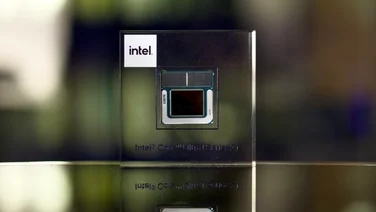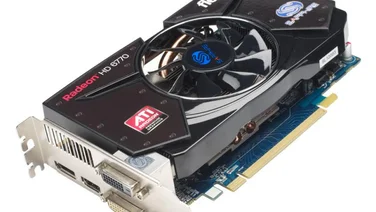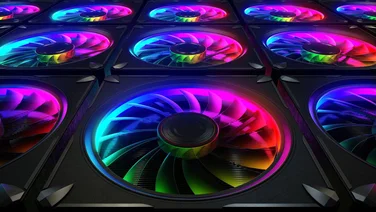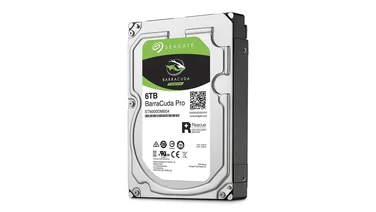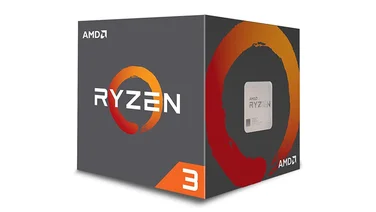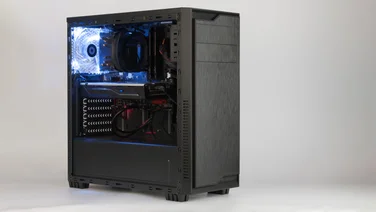To help us provide you with free impartial advice, we may earn a commission if you buy through links on our site. Learn more

Intel’s Tick-Tock processor development timeline took a bit of a tumble with Broadwell, at least on the desktop. While shrinking from Haswell’s 22nm manufacturing process to 14nm mostly resulted in better power efficiency and extended battery life in laptops, performance gains on desktop were rather modest. Throw in the fact that the desktop chips were released very late and most PC builders and manufacturers didn’t bother with it. With Skylake, it’s Intel’s chance to make amends.
Skylake is a Tock, an architectural redesign for improved performance and additional features, built on the same 14nm manufacturing process as Broadwell. This is partly why you won’t be able to use Skylake processors in existing LGA1150 motherboards. Instead, the new 6th-generation CPUs use the new LGA1151 socket, meaning you’ll need to buy a compatible motherboard to pair with it. Value-oriented H170 boards will be arriving later in the year, but high-end users, gamers and overclockers will be more at home with the premium Z170 chipset.

Indeed, the first two Skylake CPUs will be enthusiast-grade, fully unlocked chips designed specifically for Z170. The top-end Core i7-6700K has Hyper-Threading, meaning its four physical CPU cores appear as eight logical cores within Windows to give a boost to heavily multi-threaded applications. The Core i5-6600K doesn’t use Hyperthreading, but otherwise the two quad-core chips are very similar. The 3.5GHz i5-6600k has a maximum Turbo frequency of 3.9GHz out of the box, with 6MB of level 3 cache, while the i7-6700k typically runs at 4GHz and turbos to 4.2GHz, with 8MB of L3 cache. We’ve looked at the former for this review, as it will be the most sensible choice for most users, striking the best balance between value and performance.
Beyond mere clock speed increases, the biggest changes from the previous generation are under the lid. The on-chip memory controller now supports DDR4 memory, although it still retains a DDR3 controller, so that motherboard manufacturers can make boards compatible with 1.35v DDR3L RAM if they choose. The fully integrated voltage regulator (FIVR) introduced with Haswell is gone, meaning users now have complete control over voltages through the BIOS if their motherboard manufacturer allows it. The chipset also supports up to 10 USB3 ports and has more PCI-Express 3.0 lanes, which can be split multiple ways depending on whether you want to run multiple graphics cards. More exciting is the addition of U.2 support for NVMe storage, which promises to be significantly faster than the traditional SATA interface.
Performance
According to Intel, Skylake should provide around a 10% performance boost over a one-year old PC running a ‘Devil’s Canyon’ Haswell refresh-based processor, a 20% increase over a two-year old Haswell-based PC and a 30% boost over an Ivy Bridge-based system. This sliding scale should be of great interest to anyone still running a Sandy Bridge CPU – the i5-2500K has aged terrifically and can still hold its own today, but Skylake might finally be the chip to encourage these people to upgrade.
Our 4K multimedia benchmarks didn’t quite validate Intel’s claims, with an overall score of 113 outpacing the 100 achieved by our Core i5-4670k Haswell-based reference system suggesting a slightly smaller increase overall, although performance varies depending on the task. In the single core image editing test, for instance, a score of 117 is more closely in line with Intel’s predictions. This is also faster than any AMD processor currently available, save for the ludicrous FX-9590 – a 4.7GHz quad-core chip with a thermal design point (TDP) of 220W, which is practically unusable without serious water-cooling. It also lacks any kind of integrated graphics, putting it at a disadvantage to the Skylake platform if you don’t plan on buying a graphics card.

^ As expected, Skylake has the edge over anything AMD has to offer in single core-optimised tasks

^ The octa-core FX-9590 takes the edge in video editing, but requires far more power to do so. Clock for clock, Skylake is far more efficient

^ Despite having four more cores, the FX-9590 takes a back seat to Skylake in our multitasking test

At stock speeds you can expect a minor increase over like-for-like Haswell CPUs, but considering this is a multiplier-unlocked ‘K’ edition chip, we doubt many people will stick with the native 3.5GHz.
Graphics
Although we doubt many people would buy a multiplier unlocked processor and not pair it with a dedicated graphics card, the Core i5-6600K’s onboard Intel HD Graphics 530 is significantly better than previous generation integrated GPUs. It runs at a stock 350MHz, but can Boost to 1,200MHz when required for 3D games.
The Haswell-based i5-4670K could only manage 32.3fps in Dirt Showdown at 1,280×720 with 4x anti-aliasing and graphics quality set to high, but the i5-6600k managed 45.3fps. This score outpaced AMD’s FM2-based A10-6800K, which produced 42.6fps, but the FM2+ based A10-7850K was still faster with a 52fps average. AMD has historically had faster integrated graphics, but this is a clear indication Intel has now mostly caught up in terms of performance.

^ Skylake is a big improvement over Haswell in terms of graphics, although AMD still has a slight edge
Overclocking
Intel was notoriously against overclocking in the past, keeping processors as locked down as possible. That has slowly changed over the past decade, with multiplier overclocking available on the enthusiast level K chips and ratio-based Base Clock (BCLK) overclocking introduced with Haswell in 2013. Skylake takes things even further, allowing complete control over the BCLK. As this clock is no longer tied to SATA and PCI-Express timings, you should be able to squeeze the absolute most out of each CPU without risking data or video corruption by sending SATA or PCI timings out of whack.
That being said, we weren’t able to see many gains from pushing the Base Clock. Increasing it by even a few MHz led to instability and crashes until we started boosting the CPU voltage. We had more luck by increasing the multiplier, easily pushing the i5-6600K to 4.5GHz at maximum Turbo speeds without needing to adjust voltages. This gave a significant boost in our multimedia benchmarks, producing a fantastic overall score of 146. We pushed the chip further to 4.7GHz for a slightly faster 148 total, but we had to increase voltages to beyond 1.35v to keep the chip stable. We’ll need more time with Skylake in order to see how base clock settings can squeeze extra performance from the architecture.

Thermals and power consumption
Overclocking dramatically increased power consumption too; our reference system, fitted with an i5-6600K, two sticks of DDR4 RAM and an M.2 SSD, typically draws 29w at idle and 80w under load, but these figures jump up to 49w and 130w respectively. Skylake might use the same 14nm process as Broadwell, but out-of-box power requirements are considerably higher too. Whereas desktop-based Broadwell chips had a 65W Thermal Design Point, the maximum amount of heat generated by the CPU that the cooling system has to dissipate, the i5-6600K has a 91W TDP.
Sadly, Intel didn’t provide us with the new stock heatsink that will come bundled with all 6th-generation Core processors, so we used a third party cooler, the BeQuiet Dark Rock Pro 3. This monstrous two fan tower cooler kept the i5-6600K at a very cool 28C at idle.

Should you upgrade?
There’s no doubt Skylake is a powerful platform, and although it isn’t quite as power-efficient as the Broadwell architecture that came before, it will be arriving in much greater numbers and have much greater support from motherboard manufacturers. The Core i5-6600K in particular looks like an excellent buy, whether you plan on overclocking or not; it’s faster than previous generation Intel chips at stock speeds, beats AMD for graphics performance for the first time and uses a modern chipset that supports plenty of new and upcoming technologies like U.2 and PCI-express-based storage.
However, it will be an expensive upgrade. Not only do you have to consider the price of the processor, but also factor in the cost of a motherboard and, with all current boards, a set of DDR4 memory. Thankfully the latter is no longer quite as expensive as it was last year, but it’s still nowhere near as simple as simply dropping a new chip into your existing system and flashing a BIOS update.
Haswell owners will only see modest gains for an expensive initial outlay, but if you’ve been holding off upgrading for coming up to five years, Skylake is the perfect opportunity to overhaul your PC.
| Hardware | |
|---|---|
| Socket | LGA 1151 |
| Cores | 4 |
| Frequency (boost) | 3.5GHz |
| Multiplier | x35 |
| External bus | 100MHz |
| Process | 14nm |
| Level 1 cache | 4x 32KB |
| Level 2 cache | 4x 256KB |
| Level 3 cache | 6MB |
| Supported memory type | DDR4/DDR3L |
| Power rating (TDP) | 91W |
| Integrated graphics | Intel HD Graphics 530 |

